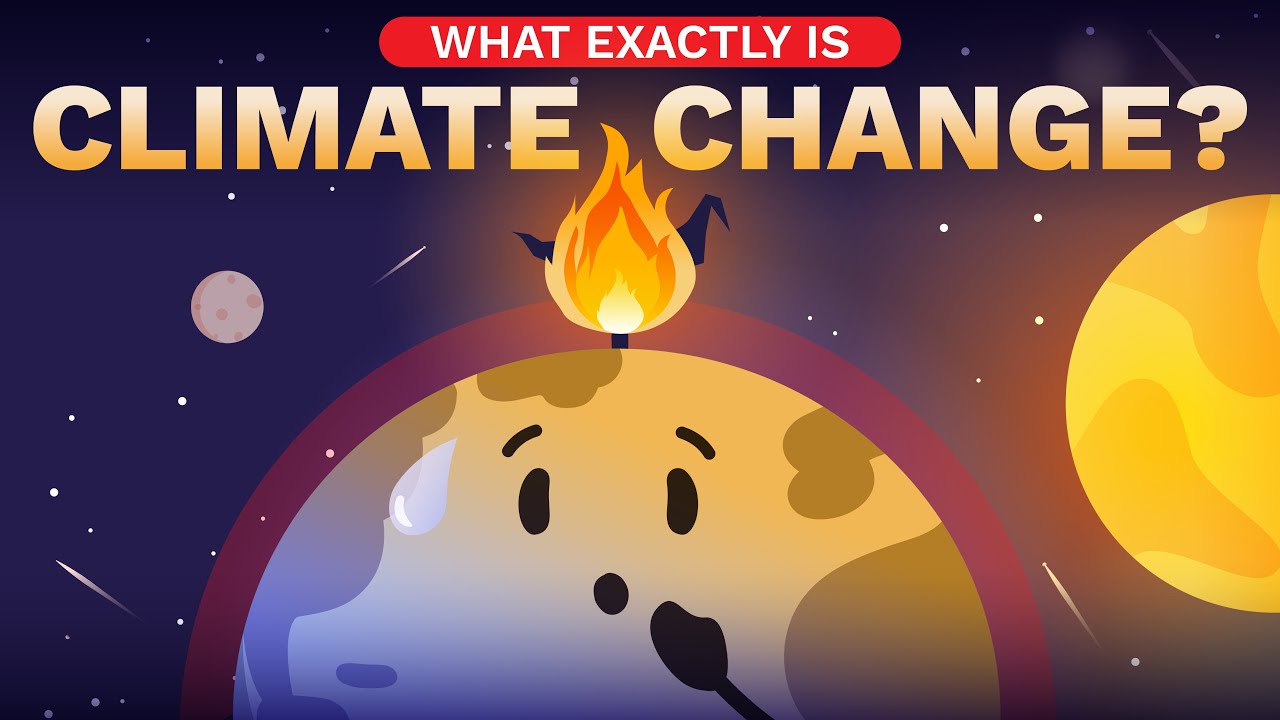Virginia Smith: The global risk of flooding -- and how to turn the tide | TED
Summary
TLDRThis powerful talk addresses the global issue of flooding, its devastating impacts on lives and economies, and the need for innovative solutions. The speaker highlights the vulnerability of urban populations, especially low-income communities, and emphasizes the importance of green stormwater infrastructure, data-driven insights, and community involvement. By using technology, creative solutions, and individual actions, we can shift the power paradigm of flooding, reduce its destructive effects, and build more resilient communities worldwide. The speaker calls for everyone to participate, whether through advocacy, action, or innovation, to tackle the flood crisis together.
Takeaways
- 😀 Flooding is a global problem that affects millions of people every year, causing significant economic losses and social upheaval.
- 😀 Traditional flood management strategies, such as stormwater and floodplain management, are becoming increasingly ineffective due to rapid urbanization and changing environmental conditions.
- 😀 Vulnerable communities, especially those in low-income or unsanctioned housing, bear the brunt of flood damage, suffering repeated hardships.
- 😀 Floods are not just a developing world issue; even developed countries like the United States face severe flooding, as seen in cities like Philadelphia and regions affected by hurricanes.
- 😀 Technological advancements, such as satellite data and artificial intelligence, are revolutionizing our ability to predict floods and design flood management solutions.
- 😀 Green stormwater infrastructure, which utilizes natural processes like infiltration, evaporation, and transpiration, is a cost-effective and sustainable way to mitigate flooding.
- 😀 Cities like Philadelphia have become global leaders in implementing green stormwater infrastructure, showing the effectiveness of these solutions in improving water quality and reducing flood risk.
- 😀 Investing in flood protection infrastructure can significantly reduce the cost of flood recovery, with a high return on investment (e.g., $1 spent on flood protection results in $248 of avoided damages).
- 😀 Community involvement is essential to solving flooding problems; individuals can participate by advocating for flood protection measures, volunteering to maintain green infrastructure, and taking personal action to reduce runoff.
- 😀 The fight against flooding is not just an engineering problem—it requires contributions from all sectors, including arts, education, biology, chemistry, urban planning, public health, and business.
- 😀 There is now unprecedented potential to solve the global flooding crisis, and by using our voices, actions, and innovations, we can shift the power paradigm and make meaningful change.
Q & A
What triggered the speaker's reflection on flooding?
-The speaker reflects on flooding after experiencing a prolonged period of rain in Samoa, where the floodwaters rose, isolating the village and causing widespread damage.
Why does the speaker mention the cost of flooding in terms of groceries?
-The speaker uses the cost of groceries to help the audience relate to the staggering financial costs of flood recovery, making the concept more tangible by comparing it to something familiar.
What is the global impact of flooding according to the World Water Resource Institute?
-Flooding is described as the most globally impactful natural disaster, causing an estimated 4,000 to 5,000 deaths annually and affecting millions of properties, leading to billions in economic losses every year.
How does rapid urbanization contribute to flooding risks?
-Rapid urbanization leads to increased stormwater runoff, reduced water quality, and altered landscapes, all of which exacerbate the impacts of flooding in cities. More people are living in coastal and urban areas, increasing their exposure to flood risks.
Who are the most vulnerable to the effects of flooding?
-The most vulnerable populations are those living in low-income, unsanctioned housing located in areas with elevated flood risks. These communities often lack the resources to prevent or recover from flooding.
What examples of flooding-related challenges did the speaker witness during their travels?
-The speaker shares experiences in Samoa, Vanuatu, Thailand, Vietnam, Cambodia, Afghanistan, Kenya, Sierra Leone, Paraguay, and Haiti, where flooding caused significant disruption, including destroyed crops, flooded markets, and damaged infrastructure.
What technological advancements are helping to address flooding?
-The growing use of satellites and data sensors is helping scientists and engineers predict flooding events and design solutions. The speaker mentions the data revolution, with satellites expected to generate vast amounts of data to better understand floods and prevent their damage.
How does green stormwater infrastructure help mitigate flooding?
-Green stormwater infrastructure, such as systems using soil and plants, helps manage stormwater by facilitating infiltration, evaporation, and transpiration. These methods are effective in flood prevention, water quality improvement, and are cost-efficient compared to traditional infrastructure.
What is the significance of Philadelphia's green stormwater infrastructure?
-Philadelphia's success in implementing green stormwater systems has turned the city from one of the worst offenders of water quality into a global leader in flood management, demonstrating the effectiveness of green infrastructure.
How can individuals contribute to addressing flooding?
-Individuals can contribute by using their voices to advocate for flood protection, taking action to manage stormwater on their properties, and getting involved in innovative solutions for flood prevention through various fields like engineering, arts, and public health.
Outlines

Cette section est réservée aux utilisateurs payants. Améliorez votre compte pour accéder à cette section.
Améliorer maintenantMindmap

Cette section est réservée aux utilisateurs payants. Améliorez votre compte pour accéder à cette section.
Améliorer maintenantKeywords

Cette section est réservée aux utilisateurs payants. Améliorez votre compte pour accéder à cette section.
Améliorer maintenantHighlights

Cette section est réservée aux utilisateurs payants. Améliorez votre compte pour accéder à cette section.
Améliorer maintenantTranscripts

Cette section est réservée aux utilisateurs payants. Améliorez votre compte pour accéder à cette section.
Améliorer maintenantVoir Plus de Vidéos Connexes

Fardeau du diabète et inégalités d’accès aux traitements - Pr. Pascal BAYAOULI

Negotiators, diplomats meeting in Geneva to seal pact on plastic pollution

O QUE NUNCA TE CONTARAM SOBRE O LIXO - Nostalgia Animado

The case for optimism on climate change | Al Gore

Climate Change: How does it really work? | ClimateScience #1

Krisis Iklim Yang Sering Diacuhkan | Tentang Krisis Iklim
5.0 / 5 (0 votes)
